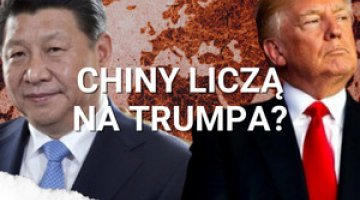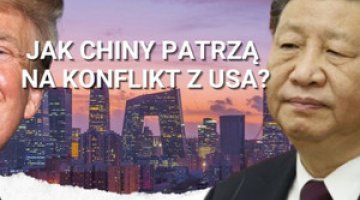China: the traps of the ‘people’s war’ against coronavirus
Despite the announcement in March this year of a breakthrough in the fight against the COVID-19 pandemic, China is still struggling with new outbreaks. On 12 May, the authorities of Wuhan, the capital of Hubei province, decided to test all of the city’s residents over 10 days for the presence of the coronavirus after six new COVID-19 cases were detected. On 18 May, a strict quarantine was introduced for the city of Shulan in Jilin province, where a new outbreak had been detected. All residents are prohibited from leaving their homes, and one family member can go out for supplies only once every two days. Milder forms of quarantine have been imposed on the whole of historic Manchuria (the provinces of Jilin, Heilongjiang and Liaoning) in north-eastern China, affecting around 108 million inhabitants. These territories have been cut off from the rest of the country, and the movement of people inside them has been halted. In Jilin a total of 34 cases have been recorded, and three in Liaoning.
Challenges to official information on the number of cases and deaths have not disappeared. On 12 May, the Foreign Policy website in the US reported on a database from the Chinese National University of Defence Technology (NUDT), which recorded 640,000 COVID-19 cases from 230 cities in the PRC (the database is currently unavailable). On the day of publication, official data reported 82,919 cases and 4633 deaths. The scale of the scepticism as to the real state of the epidemic, both at home and abroad, poses a serious challenge to the authorities. Under this pressure, during a videoconference of the World Health Assembly (WHA) – the highest decision-making body of the World Health Organisation (WHO) – on 18 May, the chairman of the PRC Xi Jinping supported a proposal for an inquiry by the WHO into the reaction to the pandemic, and declared that the PRC would support the organisation for two years with the sum of US$2 billion.
Commentary
- The Chinese authorities maintain that, as a result of putting half of China’s population under unprecedented close quarantine, and at the expense of massive economic losses, the epidemic in the country is now under control. Despite the detection of subsequent outbreaks, the government maintains that these can be isolated fairly quickly. Although subsequent infections cannot be avoided due to the virus’s nature, the authorities have so far been successful at preventing an uncontrolled increase in the incidence rate. Nevertheless, although the situation seems to be under control in comparison to many other countries, the official information from China on the number of infections still raises a number of doubts. Regardless of the imprecise nature of the disclosed data from the NUDT database, the figures indicate that the scale of the crisis is still greater than the authorities want to admit. The issue of the data’s reliability also forms part of the international criticism of the PRC, especially from the United States. The decision to re-test all the residents of Wuhan, which was taken after only a few new cases were officially detected, is particularly alarming. The radical action in the north-eastern provinces is also associated with growing fears that the new outbreaks are related to cases of coronavirus coming in from Russia and North Korea, whose government has not reported a single case of COVID-19. Even though the borders are closed, there is a danger that the smuggling of people and goods between historic Manchuria, Russia and the DPRK which has been dragging on for years now still allows Chinese citizens to return unmonitored. This gives the impression that Beijing is seeking to make a buffer out of the north-eastern provinces in order to protect the rest of the country. Local authorities have taken steps to increase social control, including offering financial rewards for reporting people who have entered China illegally.
- Regardless of the pandemic’s objective economic and social costs, the leadership of the Chinese Communist Party (CCP) has become hostage to the ‘people’s war’ against COVID-19 announced in February. The authorities assumed that the outbreak of the new coronavirus would be similar to the SARS epidemic in 2003, and took the same actions which worked 17 years ago. It should be emphasised that this was a rational assumption, largely because there was insufficient information about the nature of the new virus; it was only later discovered that the SARS-CoV-2 virus had different epidemic characteristics than the SARS-CoV responsible for the SARS epidemic. Together with the mistakes which were made at the beginning of the crisis this January, this contributed to the global spread of Covid-19; and now, despite the economic costs and sacrifices suffered, it is increasingly uncertain that it has been eliminated in China. This undermines the authority and legitimacy of the CCP, which has fallen into the trap of the narrative it has been propagating since the beginning of the epidemic. The authorities’ response has been to intensify the propaganda campaign, in order to convince the public that under the CCP’s leadership it will be possible to eliminate the threat quickly and completely, as was the case with SARS. Hence the spectacular campaigns to mass-test the residents of Wuhan; the Party’s goal is to show the public, and international public opinion, that it is determined to combat the pandemic. In addition, actions to stimulate social discipline and unity are being taken. These include emphasising the external nature of the epidemiological threats, and mobilising the public to actively eliminate them, i.e. the mass testing and campaigns to help the authorities catch illegal immigrants mentioned above.
- At present it seems impossible that the CCP can withdraw from the policy it has adopted of completely eliminating the coronavirus and adapting the strategy of many other countries, which are premised on the need to return to relatively normal socio-economic operation without the complete removal of SARS-CoV-2 until an effective vaccine is developed and distributed. To do so would undermine the CCP’s image and legitimacy, which have already been tarnished by the errors it made at the initial stage of the crisis, as well as the growing international criticism, which has not been stopped by the propaganda campaign involving the distribution of aid abroad. Mobilising the public around the party leadership is the most important and inevitable dimension of social policy in the PRC, a tactic which is currently being significantly strengthened by the pandemic. The position of the government, and in the long run the stability of the state, depend on this approach being maintained; hence the continuation of the current propaganda narrative, which will be accompanied by demonstrative and far-reaching anti-epidemic activities. Protecting and reconstructing the image of the state on the international stage remains a serious and growing problem. The crisis has taken on an additional dimension by the growing tensions in relations with many of China’s partners, with the United States at the head. It seems that this is why Beijing decided to make the apparent concession of consenting to an investigation by the WHO, despite the fact that China had strongly objected to this prior to the WHA session. However, Xi Jinping stated in his speech that the PRC agreed to an “objective and impartial” international investigation, but only after the pandemic had expired. In his opinion, this should be a “comprehensive review” of the global response to COVID-19, which “sums up all the experiences and errors”. Beijing seems to assume that an investigation which does not focus on the Chinese government’s actions will also expose the negligence and errors made by other countries, which will shift blame away from the PRC. As a rule, the WHO avoids criticising specific member states out of fear that they will not cooperate in the future. Within the organisation itself, Beijing is still influenced by the support of a bloc of developing countries; moreover, the WHO may also prolong the investigation process for several years. In the meantime, China can present its consent to an investigation as evidence of transparency; also, the fact that it is the WHO which will carry it out will block any other initiatives to conduct independent investigations.




